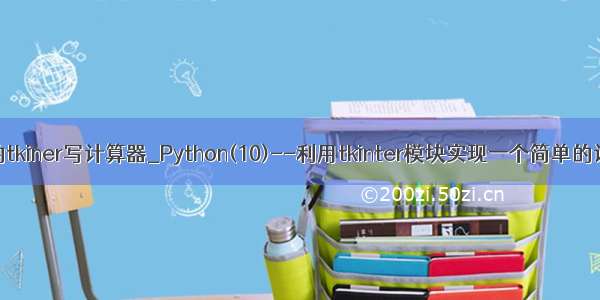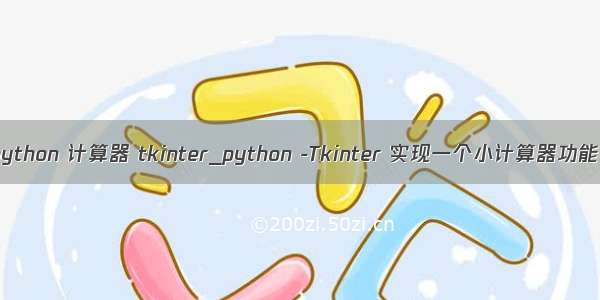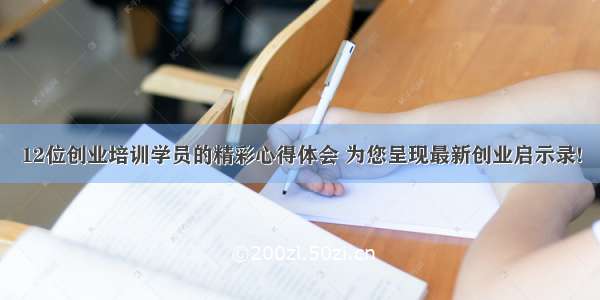
#引入相关模块(math模块和tkinter模块)
importmathimporttkinterclassMyCalculator:#初始化对象
def __init__(self):#设置主界面
self.root =tkinter.Tk()
self.root.title('于淼的计算器')
self.root.minsize(400, 550)#为label标签设置一个变量
self.var =tkinter.StringVar()#设置初始值为0
self.var.set('0')#设置用于存储运算数据的列表
self.operation_lists =[]#设置空字符串,用于截取
self.metastrs =''
#设置是否按下运算符的变量
self.isoperation =False#调用设置界面的方法
self.set_main_interface()
self.root.mainloop()#主界面布局方法
defset_main_interface(self):#显示结果和操作的区域
#frame = tkinter.Frame(self.root, width=400, height=100, )
#frame.pack()
label = tkinter.Label(self.root, bg='white', textvariable=self.var, anchor='se', font=('黑体', 35), bd=10)
label.place(x=10, y=10, width=380, height=100)#设置数字按钮
button11 = tkinter.Button(self.root, text='%', font=('黑体', 20), command=self.percent)
button11.place( x=10, y=130, width=90, height=60)
button12= tkinter.Button(self.root,text='√', font=('黑体', 20), command=self.square)
button12.place(x=105, y=130, width=90, height=60)
button13= tkinter.Button(self.root,text='x²', font=('黑体', 20), command=self.power)
button13.place( x=200, y=130, width=90, height=60)
button14= tkinter.Button(self.root,text='1/x', font=('黑体', 20), command=self.backwords)
button14.place( x=295, y=130, width=90, height=60)
button21= tkinter.Button(self.root,text='CE', font=('黑体', 20), command=self.clear_CE)
button21.place( x=10, y=195, width=90, height=60)
button22= tkinter.Button(self.root,text='C', font=('黑体', 20), command=self.clear_C)
button22.place(x=105, y=195, width=90, height=60)
button23= tkinter.Button(self.root,text='←', font=('黑体', 20), command=self.strip)
button23.place(x=200, y=195, width=90, height=60)
button24= tkinter.Button(self.root,text='÷', font=('黑体', 20), command=lambda: self.symbol('/'))
button24.place(x=295, y=195, width=90, height=60)
button31= tkinter.Button(self.root,text='7', font=('黑体', 20), command=lambda: self.change('7'))
button31.place(x=10, y=260, width=90, height=60)
button32= tkinter.Button(self.root,text='8', font=('黑体', 20), command=lambda: self.change('8'))
button32.place(x=105, y=260, width=90, height=60)
button33= tkinter.Button(self.root,text='9', font=('黑体', 20), command=lambda: self.change('9'))
button33.place(x=200, y=260, width=90, height=60)
button34= tkinter.Button(self.root,text='×', font=('黑体', 20), command=lambda: self.symbol('*'))
button34.place(x=295, y=260, width=90, height=60)
button41= tkinter.Button(self.root,text='4', font=('黑体', 20), command=lambda: self.change('4'))
button41.place(x=10, y=325, width=90, height=60)
button42= tkinter.Button(self.root,text='5', font=('黑体', 20), command=lambda: self.change('5'))
button42.place(x=105, y=325, width=90, height=60)
button43= tkinter.Button(self.root,text='6', font=('黑体', 20), command=lambda: self.change('6'))
button43.place(x=200, y=325, width=90, height=60)
button44= tkinter.Button(self.root,text='-', font=('黑体', 20), command=lambda: self.symbol('-'))
button44.place(x=295, y=325, width=90, height=60)
button51= tkinter.Button(self.root,text='1', font=('黑体', 20), command=lambda: self.change('1'))
button51.place(x=10, y=390, width=90, height=60)
button52= tkinter.Button(self.root,text='2', font=('黑体', 20), command=lambda: self.change('2'))
button52.place(x=105, y=390, width=90, height=60)
button53= tkinter.Button(self.root,text='3', font=('黑体', 20), command=lambda: self.change('3'))
button53.place(x=200, y=390, width=90, height=60)
button54= tkinter.Button(self.root,text='+', font=('黑体', 20), command=lambda: self.symbol('+'))
button54.place(x=295, y=390, width=90, height=60)
button61= tkinter.Button(self.root,text='±', font=('黑体', 20), command=self.opposite_num)
button61.place(x=10, y=455, width=90, height=60)
button62= tkinter.Button(self.root,text='0', font=('黑体', 20), command=lambda: self.change('0'))
button62.place(x=105, y=455, width=90, height=60)
button63= tkinter.Button(self.root,text='.', font=('黑体', 20), command=lambda: self.change('.'))
button63.place( x=200, y=455, width=90, height=60)
button64= tkinter.Button(self.root,text='=', font=('黑体', 20), command=self.equal)
button64.place(x=295, y=455, width=90, height=60)#计算器各种操作的函数
#按下数字的函数
defchange(self,num):#全局化
globalisoperation#判断是否按下了运算符号
#如果按下运算符号
ifself.isoperation:#将面板中的数据归0
self.var.set('0')#设置运算符状态
self.isoperation =False#获取原来的数据
metadata =self.var.get()#判断原数字是否为0
if metadata == '0' and num == '.': #如果为0,判断输入的数据是否为符号’.'
self.var.set('0'+num)elif metadata =='0' and num != '.' :#将按下的数字显示到标签中
self.var.set(num)elif metadata in ['除数不能为0','无效输入','结果未定义']:
self.var.set(num)#如果不是0,判断原数字中是否存在符号’.'
elif '.' in metadata and num == '.':return
#原数字不是0, 且符号'.' 不在原数字中
else:#将原有数字和当前按下的数字拼合到一起,显示到标签中
self.var.set(metadata +num)#获取面板中的数值,截取最后一个字符
foredata = self.var.get()[-1]#判断操作列表中的元素
#如果操作列表不为空,且操作列表最后一元素为运算符号
if self.operation_lists != [] and self.operation_lists[-1] in ['+','-','*','/']:#将面板中的字符加入列表
self.operation_lists.append(foredata)#print(self.operation_lists)
else:#如果操作列表为空
if self.operation_lists ==[] :#将截取的字符串加入列表
self.operation_lists.append(foredata)#print(self.operation_lists)
else:#如果操作列表不为空,更新列表最后一个元素
self.operation_lists[-1] +=foredata#print(self.operation_lists)
#按下运算符号的函数
defsymbol(self,sign):#全局化
globalisoperation#判断列表是否为空,不为空时,最后输入的是否为运算符
if self.operation_lists != [] and self.operation_lists[-1] in ['+','-','*','/']:
self.operation_lists[-1] =signreturn
#如果列表为空,将当前面板中的数据加入到列表中
elif self.operation_lists ==[]:#获取面板中的数据
foredata =self.var.get()#将当前面板中的数据添加到列表中
self.operation_lists.append(foredata)#将列表中的数据连接成字符串,使用eval函数进行运算
result = eval(''.join(self.operation_lists))#将运算结果显示到面板中
self.var.set(result)#清空列表,将运算结果添加到列表中
self.operation_lists.clear()
self.operation_lists.append(str(result))#将按下的运算符也存入列表中
self.operation_lists.append(sign)#设置运算符的状态
self.isoperation =True#按下等号的函数
defequal(self):#全局化
globalisoperation#判断除数是否为0
if '/' in self.operation_lists and self.operation_lists[-1] == '0':
self.var.set('除数不能为0')
self.operation_lists.clear()return
elif self.operation_lists!= [] and self.operation_lists[-1] in ['+','-','*','/']:
self.var.set('结果未定义')#如果为空列表
elif self.operation_lists ==[]:#获取当前面板中的值
value =self.var.get()#将面板中的值加入列表
self.operation_lists.append(value)
self.operation_lists+=self.metastrs#将列表中的数据组合成字符串,通过eval函数进行运算操作
strs_num = ''.join(self.operation_lists)
result=eval(strs_num)#判断整数位为长度是否大于13
if len(str(round((result)))) > 13:
self.var.set('溢出')else:
result= str(result)[0:13]#将运算结果显示到面板中
self.var.set(result)else:#将列表中的数据组合成字符串,通过eval函数进行运算操作
strs_num = ''.join(self.operation_lists)
result=eval(strs_num)#判断整数位为长度是否大于13
if len(str(round((result)))) > 13:
self.var.set('溢出')else:
result= str(result)[0:13]#将运算结果显示到面板中
self.var.set(result)
self.metastrs= self.operation_lists[-2:]#print(self.metastrs)
#清空操作列表,便于下次运算使用
self.operation_lists.clear()#设置运算符状态
self.isoperation =True#设置清空操作:计算器中的C
defclear_C(self):#将面板中的数据添加到列表里
self.operation_lists.append(self.var.get())#清空用于存储运算数据的列表
self.operation_lists.clear()#print(self.operation_lists)
#将面板中的数据归零
self.var.set('0')#设置删除当前数据的操作:计算器中的CE
defclear_CE(self):#清空用于存储运算数据的列表
self.operation_lists.pop()#print(self.operation_lists)
#将面板中的数据归零
self.var.set('0')#设置删除键
defstrip(self):#获取当前面板中的数据
present_data =self.var.get()print(present_data)#判断面板中的数据是否为0
if present_data == '0':return
#设置删除数据的操作
present_data = present_data[:len(present_data)-1]print(present_data)#判断删除后的字符串是否为空
if present_data =='':#如果为空,设置为0
self.var.set('0')
self.operation_lists[-1] = ''
else:#如果不为空,将删除后的数据显示到面板中
self.var.set(present_data)
self.operation_lists[-1] =present_data#设置1/x键
defbackwords(self):#全局化
globalisoperation#获取当前面板中的数据
globalpresent_data
present_data=self.var.get()#判断列表中数据运算结果是否为0
if present_data == '0':
self.var.set('除数不能为0')else:#将当前数据取倒数,设置到面板中
data = '(1' + '/' + present_data+')'
##判断整数位为长度是否大于13
if len(str(round((eval(data))))) > 13:
self.var.set('溢出')else:
result= str(eval(data))[0:12]
self.var.set(result)#print(self.operation_lists)
#将操作列表中的最后一个元素更新为倒数的结果
self.operation_lists[-1] =str(eval(data))print(self.operation_lists)#设置运算符状态
self.isoperation =True#设置一个数的平方的函数
defpower(self):#全局化
globalisoperation#获取当前面板中的数据
present_data =self.var.get()#print(present_data)
#将当前数据进行平方运算后,设置到面板中
data = 'math.pow' + '(' + present_data +','+ '2' +')'
#判断整数位为长度是否大于13
if len(str(round(eval(data)))) > 13:
self.var.set('溢出')else:
result= str(eval(data))[0:12]
self.var.set(result)
self.operation_lists[-1] =str(eval(data))#设置运算符状态
self.isoperation =True#设置一个数据的开平方运算
defsquare(self):#全局化
globalisoperation#获取当前面板中的数据
present_data =self.var.get()#判断数值的正负
if present_data[0] == '-':
self.var.set('无效输入')else:#将当前数据进行平方运算后,设置到面板中
data = 'math.sqrt' + '(' + present_data +')'result= str(eval(data))[0:12]
self.var.set(result)
self.operation_lists[-1] =str(eval(data))#设置运算符状态
self.isoperation =True#设置’%‘的运算
defpercent(self):#全局化
globalisoperation#获取当前面板中的数据
present_data =self.var.get()#将当前数据进行%运算后,设置到面板中
data = present_data + '*' +'0.01'result= str(eval(data))[0:12]
self.var.set(result)
self.operation_lists[-1] =str(eval(data))#设置运算符状态
self.isoperation =True#求反的运算
defopposite_num(self):#全局化
globalisoperation#获取当前面板中的数据
present_data =self.var.get()if present_data[0] == '-':
self.var.set(present_data[1:])elif present_data[-1] == '0':
self.var.set('0')else:
self.var.set('-' +present_data)
self.operation_lists[-1] =self.var.get()print(self.operation_lists)#设置运算符状态
self.isoperation =True#实例化对象
my= MyCalculator()
















